Susumu Osada, Professor, Faculty of Economics
Thinking about urban problems and implementing regional development through research and education.
*Position titles, etc., are those at the time of publishing.
Susumu Osada
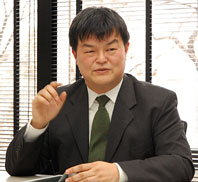
BA, Faculty of Economics, Keio University in 1991.
MSc, Geography, University of London (London School of Economics and Political Science, LSE) in 1992.
PhD, University of London (London School of Economics and Political Science, LSE) in 2001.
COE Researcher at Kyoto University's Institute of Economic Research during 2003-2004.
Associate Professor at Keio University's Faculty of Economics in 2005.
Has been Professor at Keio University's Faculty of Economics since April 2012.
Cooperation with Students for Development of the Hida-Takayama Region
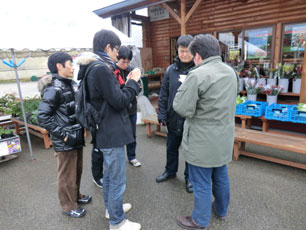
─ We hear that you participate in regional development with your students as a part of class. Could you give us the background of bringing regional workshops into your classes?
I was born and raised in a regional city, and I have been interested in regional revitalization for long time. In my specialties of Urban Economics and Economic Geography, we analyze urban change using statistical data, but in the case of regional economic development, it's essential to visit the target area and communicate people in the area.
One day, I received a request from the Hida Consortium, an organization involved in regional development in the Hida-Takayama region of Gifu, to cooperate in tourism development. There are no universities in the region, so they expected a think-outside-the-box plan towards regional economic development by having university students participate.
As an educator and researcher, I teach a seminar class for first- and second-year students. I understand that the area now expects students' participation, and so I have continually held a workshop titled "Thinking About Regional Development, Hands-on" as a part of my class.
─ Specifically, what kind of activities do you conduct?
When I went to Takayama Region with my students at first time, September of 2006, Takayama city became the Japanese largest city in spatial terms after the large-scale Heisei municipal mergers in the early 2000s. To know Takayama city, we had to visit a whole area of Takayama city, 80km east-west by 55km, in a couple of days. Here, students expressed what they saw were the regional problems and what they thought would attract tourists to the area. I collected these opinions and titled them "University Students from Tokyo Impressions of Takayama City", which I then presented to Takayama city and Gifu prefecture officials and exchanged opinions with people of the region. Students used this experience as a base for their research papers written on a theme of their own interest, which I then submitted to the Hida Consortium as results of our research.
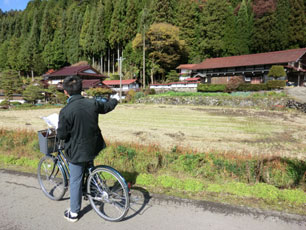
─ What kind of developments are currently growing out of your activities?
Due to the large-scale Heisei municipal merger measures in 2005, Takayama city now encompasses the Nyukawa district. local residents would like to hear students' opinions in order to expand a regional economic development project which utilizes local resources. In particular, they wanted students' opinions on the feasibility of setting a cycling course which would revolve around the district’s local resources such as its rich natural and agricultural surroundings, roadside dosojin statues, Edo-period carvings of Enku, and the historical landmark of the Ohara Uprising during the Edo Period.
To do this, Keio students went to Nyukawa in September and November of 2011 and in February of 2012 to investigate into the Nyukawa district. After chatting with local people, we found that the residents wanted students' candid advice concerning what kinds of revitalization could implement. Students walked around the district and communicated with people, and we are currently in the process of putting together our proposal for the final report meeting (as of March 2012).
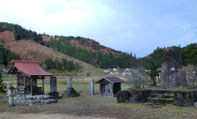
─ What do you think the students felt about their fieldwork in Nyukawa?
Firstly, students realized the quickly aging population in rural areas. They mentioned that even though it's only 10 km from Takayama's city center, there were very few young people. Additionally, there are many things local people do casually that people from the outside would be very interested in. Students are eager to propose the creation of mechanisms in which tourists can experience the area's history and lifestyle, not just creating a cycling course. For example, the Ohara Uprising may be a major historical event for the people in the district, but in order for others to experience it, there must be a mechanism in place. Using their outside view, students aim to devise a proposal which can skillfully convey the area's existing appeal; their goal is not to change the region's industry.
Postgraduate Research in English on the Definition of an Urban Area
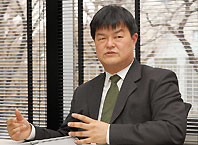
─ Please tell us the details of why you decided to research economic geography.
One of the biggest factors was to take a seminar class for first- and second-year students when I was a first-year at Keio. The whole theme of the class was "Starvation in the Third World", and a faculty member of geography arranged it. Until then, I had always thought of geography as simply memorizing facts and had no real interest in it. By taking this seminar class, my eyes were opened to the logic and academic breadth of geography as a discipline.
When I was a third-year, I joined the economic geography seminar and received training to understand the situation of a city by gathering available data. For example, I still vividly remember a seminar I took to understand the relationship of industry and location by plotting restaurants on a map by hand using a phone book, without a personal computer or any existing statistics. Four years of university flew by, but I wanted to dig deeper into economic geography, so I decided to study abroad in England after graduation. It was at the London School of Economics and Political Science where I finished my Master's and Ph.D.
─ What kind of research did you do in England?
I wrote my master's final essay on the shift of the Japanese urban population. Under this theme, I used national population census data to analyze the shift in Japan's urban population during the twenty years from the oil crisis of the early 1970s to the bubble economy of the late 1980s.
I wrote my doctoral thesis to include research concerning the "definition of functional urban regions" in order to perform a more elaborate analysis. It is necessary to clearly define the extent of functional urban regions when conducting urban research. In the case of Japan, municipalities are configured taking into consideration industrial structure and the population size and density. However, today transportation networks have evolved to where traveling beyond the borders of municipalities is common practice. It is important to configure functional urban regions which reflects the everyday life of its inhabitants in order to perform urban research. In fact, comparing overseas urban research becomes a comparison of research results based on a functional ones, so this work is very important. In my master's thesis, I started my research by configuring my own definition of functional urban regions called Japanese Functional Urban Areas (JFUAs) which differed from existing definitions, and compared it with urban areas in England.
Through communication, I want to create mechanisms which solve regional problems
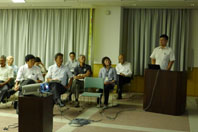
─ Urban geography and economic geography seem to be extremely broad academic fields.
Yes, that's true. Economic geography as a field of study began in the 19th century, incorporating various academic fields such as economic theory, descriptive geography, urban engineering, and regional marketing. When talking with colleagues, I used to joke that we could handle any issue that deals with "place" or "space". The fields of regional revitalization and urban issues that I have chosen as my research field represents only a tiny fraction of the issues economic geography handles.
─ What topics do you want to work on next?
I think I will mainly approach two topics.
One is research concerning the "definition of functional urban regions", which I discussed earlier. Thinking of the regions as something that reflects the actual conditions of a city, I will try to verify where the center of a city actually is and the suburbs that make up its outer edges. I will continue to think about this because it is intimately connected to the fundamental problem awareness of "what a city is".
The other topic is constructing an approach to establish methodology for regional economic development rooted in local areas themselves. This is a method to solve regional problems and to figure out the core problems of a region has and also a proposal to organizational operations towards practices which lead to a solution. These lead to real regional development. We are prone to think case by case in fields concerning regional development, so I want to establish a general method. That's why I think that the practical transactions between students and people living in the region are very important.
I think that the opportunities for universities to contribute to society and the community will start to increase, so I want to be involved in various activities about regional communication issues.
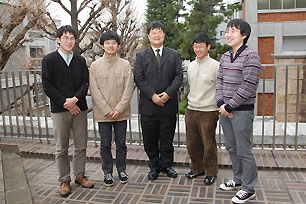
(From left: second-year Kousuke Matsumoto, Faculty of Law; second-year Yuichiro Watanabe, Faculty of Economics; fourth-year Sachio Okuno, Faculty of Economics; fourth-year Satoshi Kato, Faculty of Economics) (As of March 2012)
*This article appeared in "Kenkyu Saizensen" (Apr. 16, 2012) of Keio University Japanese Website.
